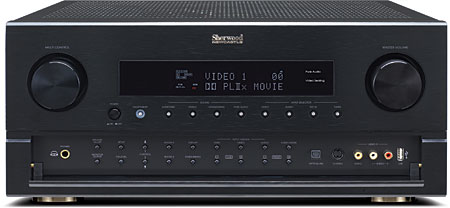@multichannel_guy
Here's the idea of speaker remapping
Dirac, Audyssey, Anthem ARC, REW have no reliable way to distinguish between these scenarios:
Perfect ITU placement vs too close vs too far



The levels and distance are all the same...
Sony, Yamaha, and Trinnov are able to distinguish between these scenarios, but only Trinnov combines speaker position knowledge with advanced EQ/phase/room correction
Just as L+R creates a phantom center, the Trinnov can use the left *and* the center to place the "perceived" left speaker in the correct position

To do this, you need exceptional control of phase and frequency response so that the phantom center works.
Now imagine that the Trinnov knows the position of every speaker, its effect on the room for direct, first, and late reflections along with room nodes. It can fine tune everything and make it actually work.
There's a lot of "what about ______" but it really does work. The old Sherwood R972 had this feature and I loved in the plan 7.1 era. A little bit like Yamaha's CinemaDSP, there are a lot of questions whether it works or not -- but in practice, it really does.
Even if you have perfect Dolby Atmos speaker placement, it'll be wrong for DTS:X and Auro3D. So even in a very premium theater setup, Trinnov maximizes your performance for Atmos, Auro-3D, and DTS:X...
Of course, a lot of Atmos content is hard coded without dynamic objects and the HTP-1 wins with BassEQ when the source bass is filtered and you believe that the cinema reference contains more <30 Hz content.
Here's the idea of speaker remapping
Dirac, Audyssey, Anthem ARC, REW have no reliable way to distinguish between these scenarios:
Perfect ITU placement vs too close vs too far
The levels and distance are all the same...
Sony, Yamaha, and Trinnov are able to distinguish between these scenarios, but only Trinnov combines speaker position knowledge with advanced EQ/phase/room correction
Just as L+R creates a phantom center, the Trinnov can use the left *and* the center to place the "perceived" left speaker in the correct position
To do this, you need exceptional control of phase and frequency response so that the phantom center works.
Now imagine that the Trinnov knows the position of every speaker, its effect on the room for direct, first, and late reflections along with room nodes. It can fine tune everything and make it actually work.
There's a lot of "what about ______" but it really does work. The old Sherwood R972 had this feature and I loved in the plan 7.1 era. A little bit like Yamaha's CinemaDSP, there are a lot of questions whether it works or not -- but in practice, it really does.
Even if you have perfect Dolby Atmos speaker placement, it'll be wrong for DTS:X and Auro3D. So even in a very premium theater setup, Trinnov maximizes your performance for Atmos, Auro-3D, and DTS:X...
Of course, a lot of Atmos content is hard coded without dynamic objects and the HTP-1 wins with BassEQ when the source bass is filtered and you believe that the cinema reference contains more <30 Hz content.
Last edited:


